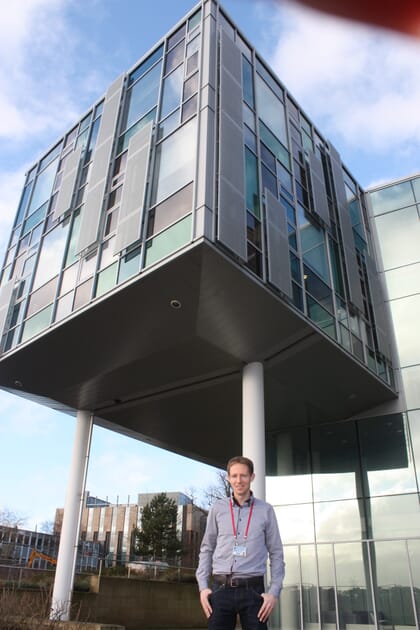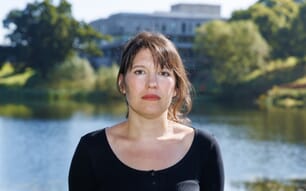
Researchers are seeking to identify genes that could make Atlantic salmon resistant to sea lice, parasites that cost the global aquaculture sector nearly £800 million each year and negatively affect fish health and welfare. The scientists are exploring the biological processes associated with these genes, hoping to learn more about how they impact underlying resistance to the parasites.
They will begin by studying the response to lice attachment exhibited by coho salmon, a species of salmon which is fully resistant to sea lice and then applying knowledge gained concerning mechanisms of resistance to Atlantic salmon, which is susceptible.
The project is led by researchers from the Roslin Institute* and the University of Stirling’s Institute of Aquaculture, and will receive a total of £1.7 million from the Biotechnology and Biological Sciences Research Council (BBSRC)* and the Sustainable Aquaculture Innovation Centre (SAIC). It is an industrial partnership award with aquaculture breeding company Benchmark Genetics.

Shortlisting genes
Researchers will use data previously collected from 12,000 infected fish to identify regions of the salmon genome associated with resistance to sea lice.
They will also compare Atlantic salmon with coho salmon to investigate the key mechanisms, genes and proteins involved in their different responses to lice.
Gene-editing will be used to validate and shortlist genes and processes that could be linked to resistance, through tests examining the effects of silencing genes of interest.
Initial research will be conducted in fish cells, to identify the genes that are most likely to be involved in resisting infection by lice. These genes will then be targeted to produce gene-edited salmon embryos.
Gene editing, which enables targeted, precise changes to the genetic code, has been used in previous studies by scientists from the Roslin Institute to identify disease resistance genes in salmon, and has potential applications in aquaculture breeding to improve health and welfare traits.
Alternative control strategies, such as feed supplements, cleaner fish and tailored cage design are only partially effective and some lice are developing resistance to drugs. Selective breeding to increase resistance of salmon to lice is an effective but relatively slow process because a generation of salmon takes up to four years to reach maturity for reproduction.
“Gene editing has potential to expedite the breeding of disease-resistant salmon by making targeted changes, informed by years of research into the genetic and functional mechanisms of resistance to sea lice. Work by our consortium aims to improve fish health and welfare, and enhance the sustainability of the salmon aquaculture sector, which is worth approximately £1 billion per year to the UK economy and is a major source of employment in rural communities of the Scottish Highlands,” said Professor Ross Houston, personal chair of aquaculture genetics at the Roslin Institute.
“Different species show varying resistance to sea lice – while Atlantic salmon is highly susceptible, coho salmon is almost completely resistant. We are going to compare the genomes of the two species to understand how they are linked to their response to lice, so that we can identify the key mechanisms underlying resistance in coho salmon. We can then attempt to transfer these resistance mechanisms from coho salmon to Atlantic salmon via genome editing,” the Roslin Institute's Dr Diego Robledo added.
“This project is a great example of the diverse and innovative work that is being undertaken in Scotland to tackle the perennial challenge of sea lice. The health and welfare of fish is of paramount importance to our aquaculture sector, and it is very encouraging to see world-leading research take place in our institutions. We are pleased to help fund this initiative, supporting increased economic impact with a reduced environmental footprint in UK aquaculture,” Heather Jones, CEO of the SAIC, said.
*The Roslin Institute receives strategic investment funding from the BBSRC and it is part of the University of Edinburgh’s Royal (Dick) School of Veterinary Studies.




